Top Rankings
Closter Public School District ranks among the top 20% of public school district in New Jersey for:
Category
Attribute
Overall Rank
Highest overall rank (Top 5%)
Math Proficiency
Highest math proficiency (Top 10%)
Reading/Language Arts Proficiency
Highest reading/language arts proficiency (Top 5%)
Science Proficiency
Highest science proficiency (Top 5%)
For the 2025 school year, there is 1 public preschool serving 620 students in Closter Public School District. This district's average pre testing ranking is 10/10, which is in the top 10% of public pre schools in New Jersey.
Public Preschool in Closter Public School District have an average math proficiency score of 77% (versus the New Jersey public pre school average of 34%), and reading proficiency score of 79% (versus the 44% statewide average).
Minority enrollment is 60% of the student body (majority Asian), which is less than the New Jersey public preschool average of 64% (majority Hispanic).
Overview
This School District
This State (NJ)
# Schools
2 Schools
924 Schools
# Students
1,190 Students
368,931 Students
# Teachers
103 Teachers
33,283 Teachers
Student : Teacher Ratio
12:1
12:1
District Rank
Closter Public School District, which is ranked within the top 10% of all 646 school districts in New Jersey (based off of combined math and reading proficiency testing data) for the 2021-2022 school year.
Overall District Rank
#30 out of 650 school districts
(Top 5%)
(Top 5%)

Math Test Scores (% Proficient)
70%
36%
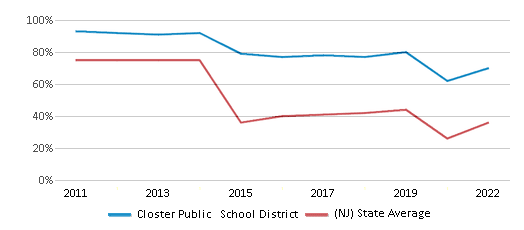
Reading/Language Arts Test Scores (% Proficient)
82%
49%

Science Test Scores (% Proficient)
54%
23%
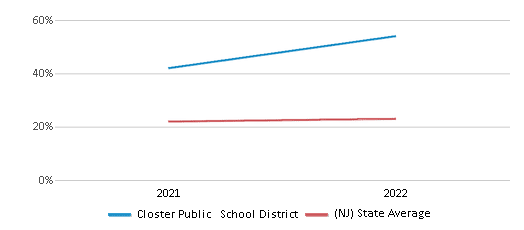
Students by Ethnicity:
Diversity Score
0.64
0.71
# American Indian Students
2 Students
901 Students
% American Indian Students
n/a
n/a
# Asian Students
502 Students
30,033 Students
% Asian Students
42%
8%
# Hispanic Students
99 Students
132,928 Students
% Hispanic Students
9%
36%
# Black Students
15 Students
58,834 Students
% Black Students
1%
16%
# White Students
497 Students
132,766 Students
% White Students
42%
36%
# Hawaiian Students
14 Students
790 Students
% Hawaiian Students
1%
n/a
# Two or more races Students
61 Students
12,631 Students
% of Two or more races Students
5%
4%
Students by Grade:
# Students in PK Grade:
30
59,693
# Students in K Grade:
92
56,070
# Students in 1st Grade:
120
51,032
# Students in 2nd Grade:
113
50,036
# Students in 3rd Grade:
119
42,983
# Students in 4th Grade:
146
37,934
# Students in 5th Grade:
121
29,352
# Students in 6th Grade:
155
15,586
# Students in 7th Grade:
145
11,676
# Students in 8th Grade:
149
11,589
# Students in 9th Grade:
-
663
# Students in 10th Grade:
-
626
# Students in 11th Grade:
-
579
# Students in 12th Grade:
-
1,080
# Ungraded Students:
-
32
District Revenue and Spending
The revenue/student of $23,418 in this school district is less than the state median of $26,931. The school district revenue/student has stayed relatively flat over four school years.
The school district's spending/student of $21,410 is less than the state median of $25,828. The school district spending/student has stayed relatively flat over four school years.
Total Revenue
$28 MM
$36,642 MM
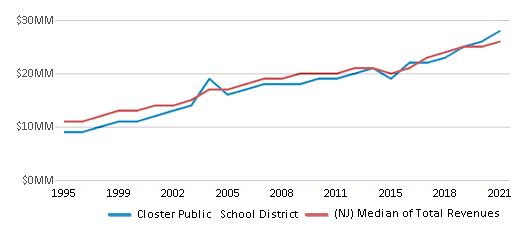
Spending
$26 MM
$35,142 MM
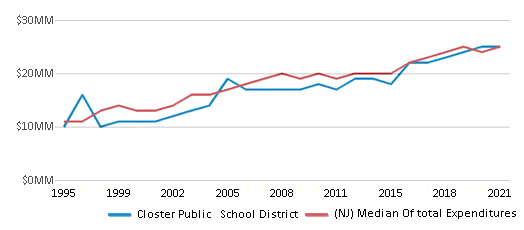
Revenue / Student
$23,418
$26,931
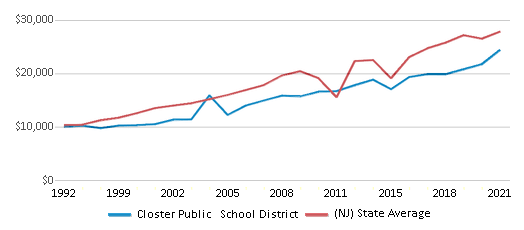
Spending / Student
$21,410
$25,828
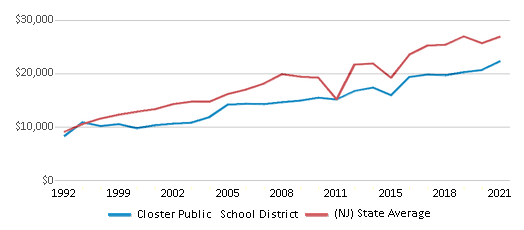
Best Closter Public School District Public Preschools (2025)
School
(Math and Reading Proficiency)
(Math and Reading Proficiency)
Location
Grades
Students
Rank: #11.
Hillside Elementary School
(Math: 77% | Reading: 79%)
Rank:
Rank:
10/
Top 5%10
340 Homans Avenue
Closter, NJ 07624
(201) 768-3860
Closter, NJ 07624
(201) 768-3860
Grades: PK-4
| 620 students
Recent Articles

Year-Round Or Traditional Schedule?
Which is more appropriate for your child? A year-round attendance schedule or traditional schedule? We look at the pros and cons.

Why You Should Encourage Your Child to Join a Sports Team
Participating in team sports has a great many benefits for children, there is no doubt. In this article you will learn what those benefits are.

White Students are Now the Minority in U.S. Public Schools
Increasing birth rates among immigrant families from Asia and Central and South America, combined with lower birth rates among white families, means that for the first time in history, public school students in the United States are majority-minority. This shift in demographics poses difficulties for schools as they work to accommodate children of varying language abilities and socio-economic backgrounds.





